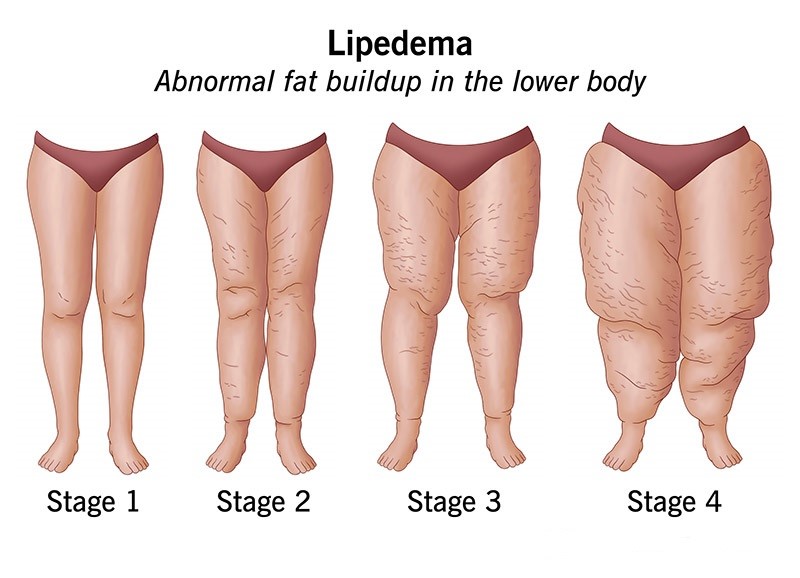Lipedema
Lipedema is an abnormal fat buildup on both sides of your lower body, usually in your legs. But it can also be in your arms. It can cause pain and make daily activities difficult. Lipedema doesn’t respond to diet and exercise like ordinary fat.
What is lipedema?
Lipedema is a long-term condition that causes abnormal fat buildup in the lower part of your body. Lipedema most often involves your butt, thighs and calves. Some people have it in their hips or upper arms. It doesn’t affect your hands or feet.
People sometimes confuse lipedema with having overweight or lymphedema, but these are different conditions. However, lipedema can lead to lymphedema. Many people with lipedema have a body mass index (BMI) higher than 35.
Dieting and exercising can cause you to lose weight in your upper body without changing the areas lipedema affects in your lower body.

Types of lipedema
You may have more than one type of lipedema at a time, depending on where you have symptoms. Types of lipedema include:
- Type I:Fat is between your belly button and your hips.
- Type II:Fat is between your pelvis and knees.
- Type III:Fat is between your pelvis and ankles.
- Type IV:Fat is between your shoulders and wrists.
- Type V:Fat is between your knees and ankles.
What are the symptoms of lipedema?
Lipedema symptoms include:
- Fat buildup in your butt, thighs, calves and sometimes upper arms on both sides of your body.
- Bumps inside the fat that feel like there’s something under your skin.
- Pain that can be from mild to severe and from constant to only with pressure.
- A heavy feeling in your legs.
- Swelling.
- Skin that bruises easily.
Stages of lipedema
Lipedema slowly worsens with time in many people. Lipedema stages include:
- Stage 1: Your skin looks normal, but you can feel something like pebbles under your skin. You can have pain and bruising at this stage.
- Stage 2: Your skin surface is uneven and may have dimpling that looks like quilted stitching, a walnut shell or cottage cheese.
- Stage 3: Your legs can look like inflated rectangular balloons and you have large folds of skin and fat. Fat on your legs may stick out, making it hard to walk.
- Stage 4: You have lipedema and lymphedema at the same time.
How is lipedema treated?
We treat lipoedema with liposuction, we use tumescent liposuction as it is the safest option for lipoedema.
Liposuction of the whole circumference of thighs cost £2700.
- Liposuction waist -------------- £1550
- Liposuction Tummy ------------ £1550
- Liposuction Arms -------------- £1550
- Liposuction upper back--------£1550
- Liposuction Chin --------------- £1550
- Liposuction inner thighs -------- £1550
- Brazilian butt lift --------------- £1550
- BBL from tummy --------------- £1550
- BBL from upper inner thighs ----- £1550
- Breast Augmentation ---------- £1550
- Full tummy tuck---------------- £2700
- Breast Implant (Monter)-------£2700
- Rhinoplasty ------------------- £1500
- IVF----------------------------- £1500
- Hernia Repair Surgery -------- £600
- Hair transplant --------------- £800
- Labiaplasty ------------------- £1550
- Vaginal Tightening ------------ £1550
- Dental Treatment -------------- £50
- Youtube Channel
